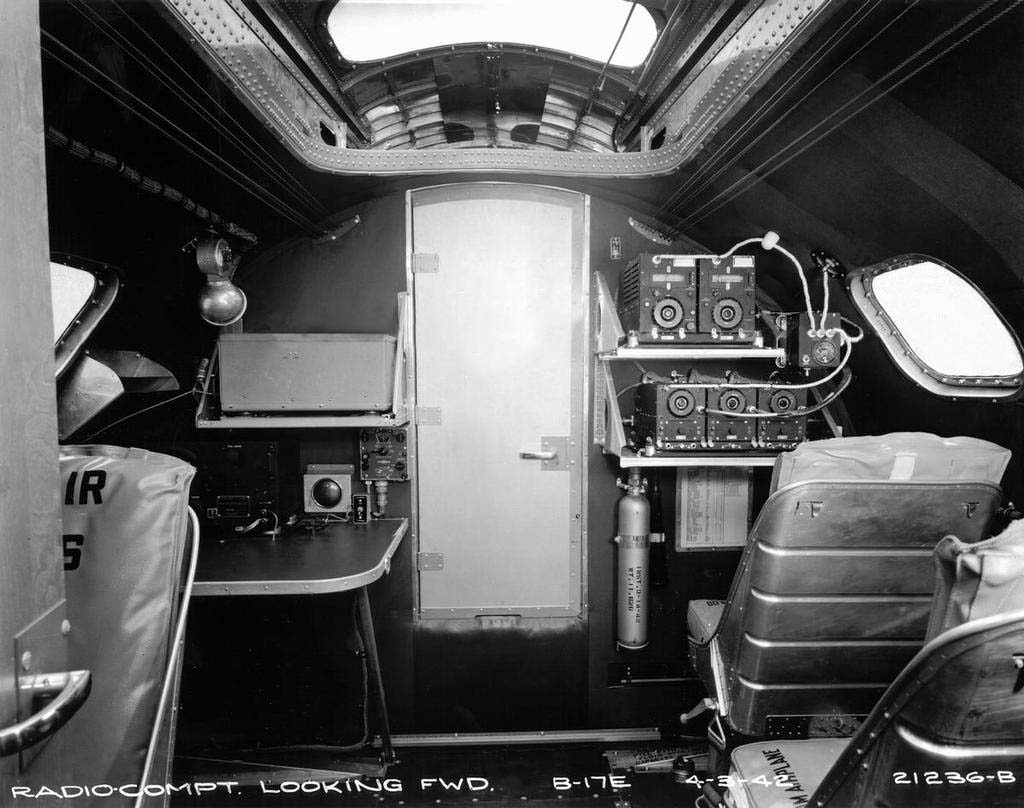
The radio compartment (Station 5) of a B-17E, 3 April 1942.
As we have been posting updates, I am sure some of you are wondering what we mean by “Station 4,” “Station 5,” etc. It takes some time to get used to. Essentially, what we are referring to are the cylindrical pieces of the airframe, which are sequentially numbered from nose to tail. Included amongst the stations are the four major bulkheads: Bulkhead/Station 3 (the back wall of the nose), Bulkhead/Station 4 (the back wall of the cockpit), Bulkhead/Station 5 (the front wall of the radio compartment), and Bulkhead/Station 6 (the back wall of the radio compartment).
This chart may help:

Boeing B-17F Stations. (© Gerad Blume)
These bulkheads are the natural starting point for any B-17 project.
The bulkheads separate each of the major compartments from one another, offering some measure of relief from the wind and cold. Access between the compartments is made through a series of thin, wooden doors.
We decided to go ahead and replicate these interior doors.
Despite the numerous stations, there are usually just three interior doors, located at Stations 4, 5, and 6. The nose was separated from the cockpit by a folding metal shutter and the waist section was left relatively hollow save for a minor bulkhead at Station 7 supporting the tail wheel.
Few surviving B-17s still have their interior doors, usually removing them to make it easier to crawl around. What few B-17s restorations that opt for interior doors often resort to building them using ordinary 3/4 inch plywood. Unfortunately, this is not accurate. The blueprints clearly call for 1/16 inch Birch veneers, which are glued over a series of 3/4 inch Spruce stringers.
In essence, the interior doors on a B-17 were hollow-core.
Finding the veneers was not easy, but we were able to find an excellent source through Boulter Plywood of Medford, Massachusetts. A Marine Grade plywood certified by Lloyd’s of London, the plywood was so thin that we could cut it with a pocket-knife. Using an original Boeing door latch, the deadwood was laid out on the veneer, with plenty of 1 1/2 inch square blocks inserted to mount the bomb-bay’s forward armor plate upon. Late-B-17Fs featured plenty of armor plating on their forward bulkheads, most of which were made of 1/4 inch thick stainless steel.
If deemed necessary, the blueprints called for the use of tiny, staple nails to help the glue secure the panels. While it is worth noting that modern wood glues are far superior to those used in the Second World War, we decided to replicate this anyway based on high-resolution photos taken during the war. The only real concession made was to use a traditional arch rather than a steamed arch for the doors in Stations 4 and 5. This technique is older than the B-17 itself and will be far stronger and long-lasting than if we had steamed an arch into place.
Below are some examples of our work, with the original blueprints beside for comparison.
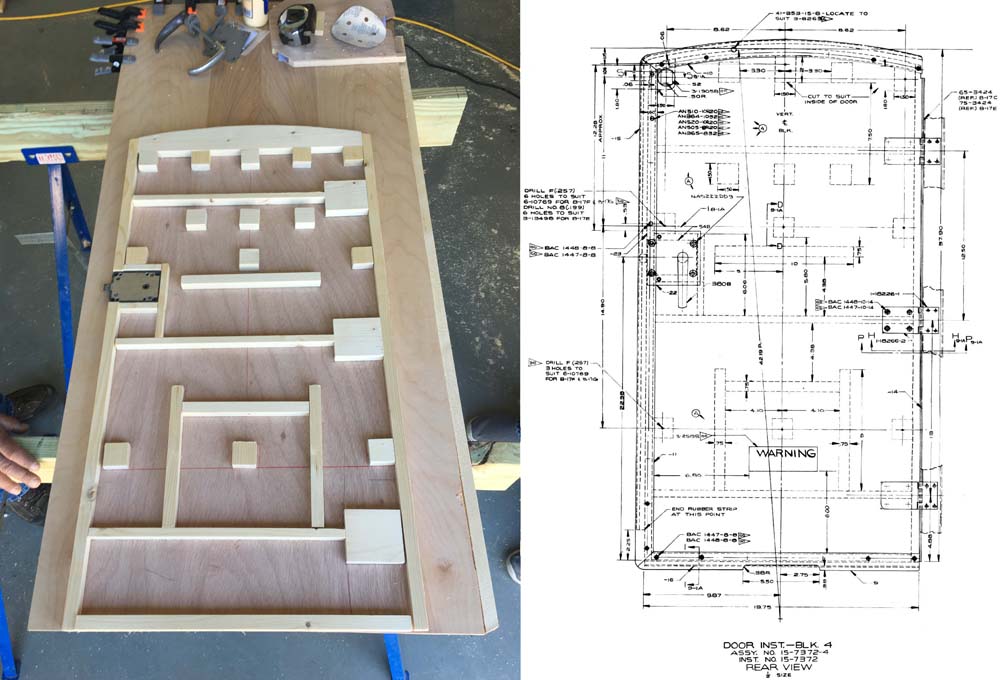
Interior Door 15-7372-4 under construction, with the blueprint for comparison.

Interior Door 15-7372-4 is test fitted into Station 4.
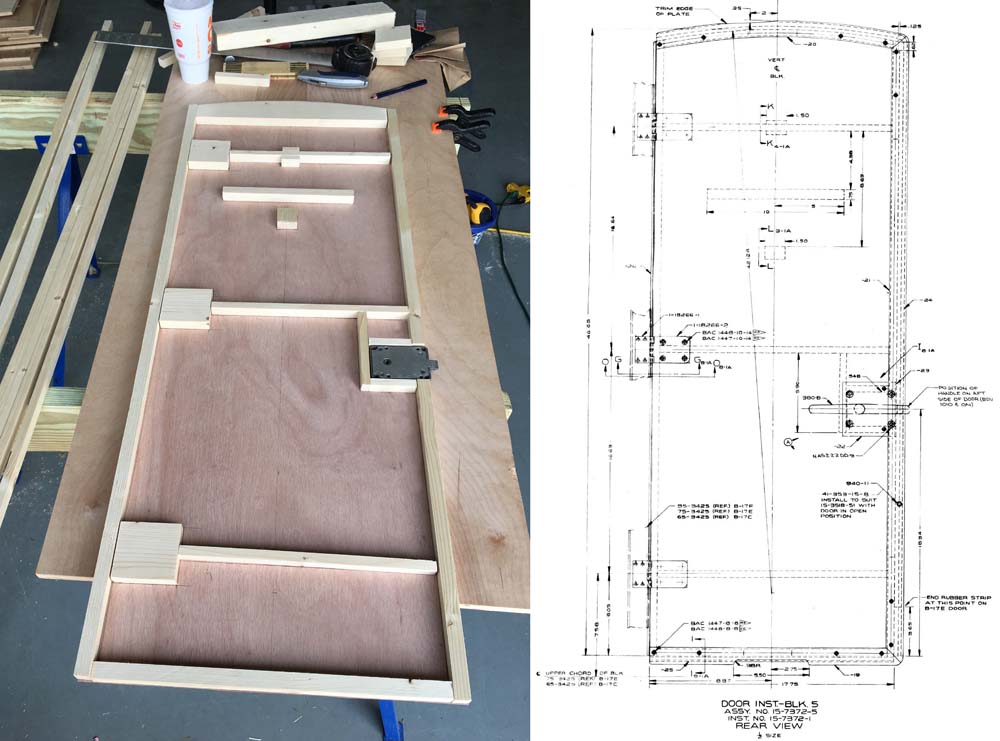
Interior Door 15-7372-5 under construction, with the blueprint for comparison.
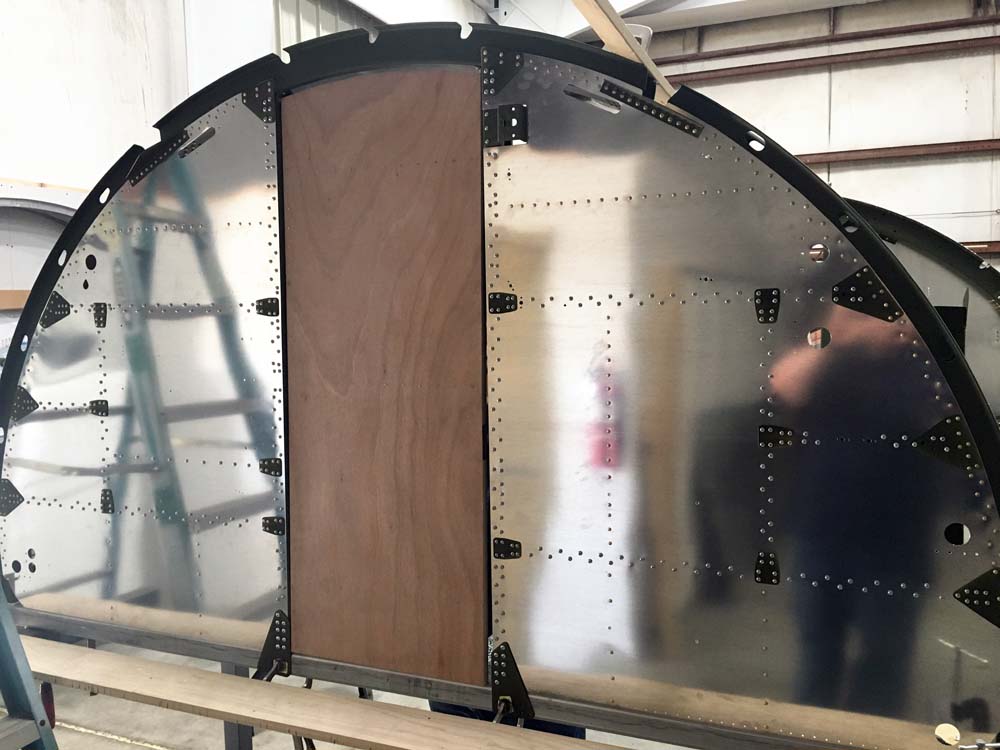
Interior Door 15-7372-5 is test fitted into Station 5.
Not shown in the photos above is the door to Station 6 (because Station 6 is not yet complete), the largest of the hollow-core doors. This door featured a stenciled-on warning demanding that it be opened anytime the radio operator opened the compartment’s roof-hatch. An attempt to equalize the air pressure in said windy environment, documentation from William Wyler suggests that some crews may have sawed the door off above the third stringer to keep it closed in combat. Since this has not been confirmed, we have elected to leave the door in one piece.
Starting in the B-17E series and stopping with B-17F Block-105, a fourth door was located at Station 9, separating the tail gunner from the cold winds of the tail wheel opening. We were notified of this door’s existence by the National Museum of the US Air Force with their work on Memphis Belle (41-24485, 91BG), as this door had prior been forgotten by history. It has been suggested that the lack of documentation on this door may be due to the door being commonly removed from combat aircraft. Whether or not this was so, we replicated this door to be as complete as possible. The tail gunner’s crawlway door was made of 5/16 3-Ply Douglas Fir, the arch in the door allowing it to freely swing over the crawlway floor.
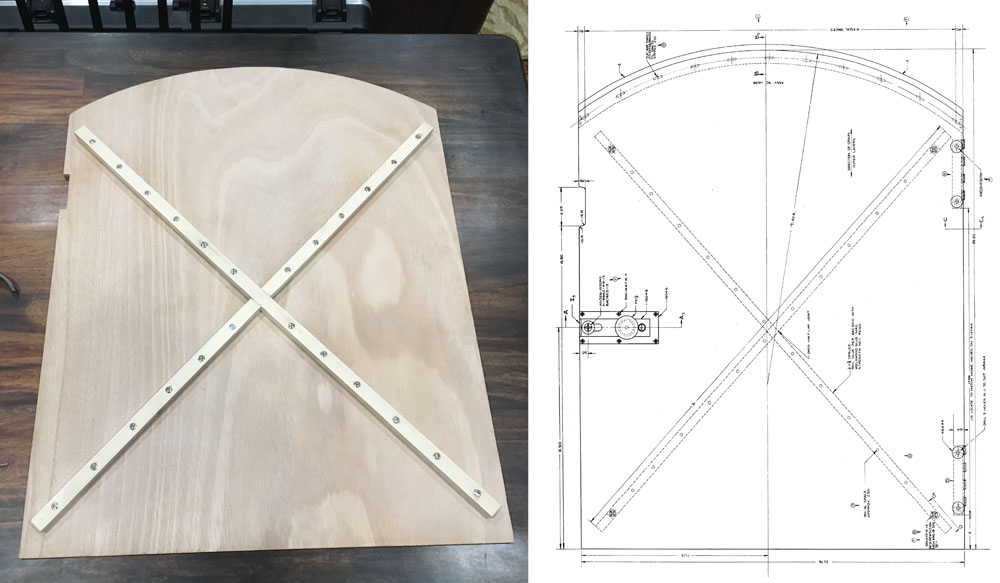
Interior Door 15-7347 under construction, with the blueprint for comparison.
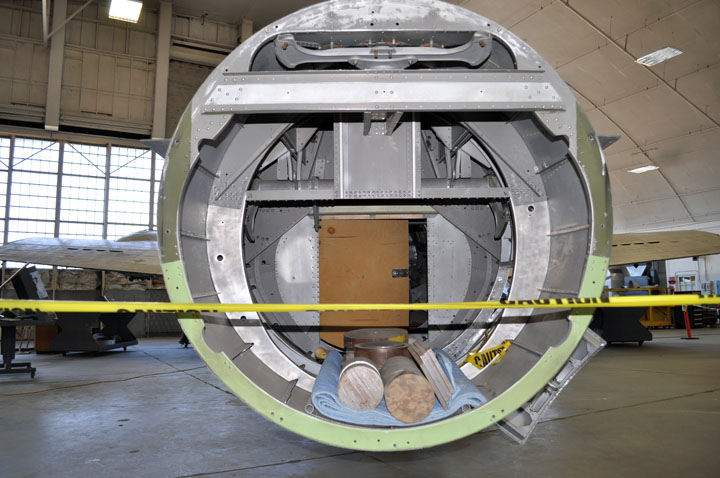
Interior Door 15-7347 in Station 9 of Memphis Belle. (© Mark Young)
